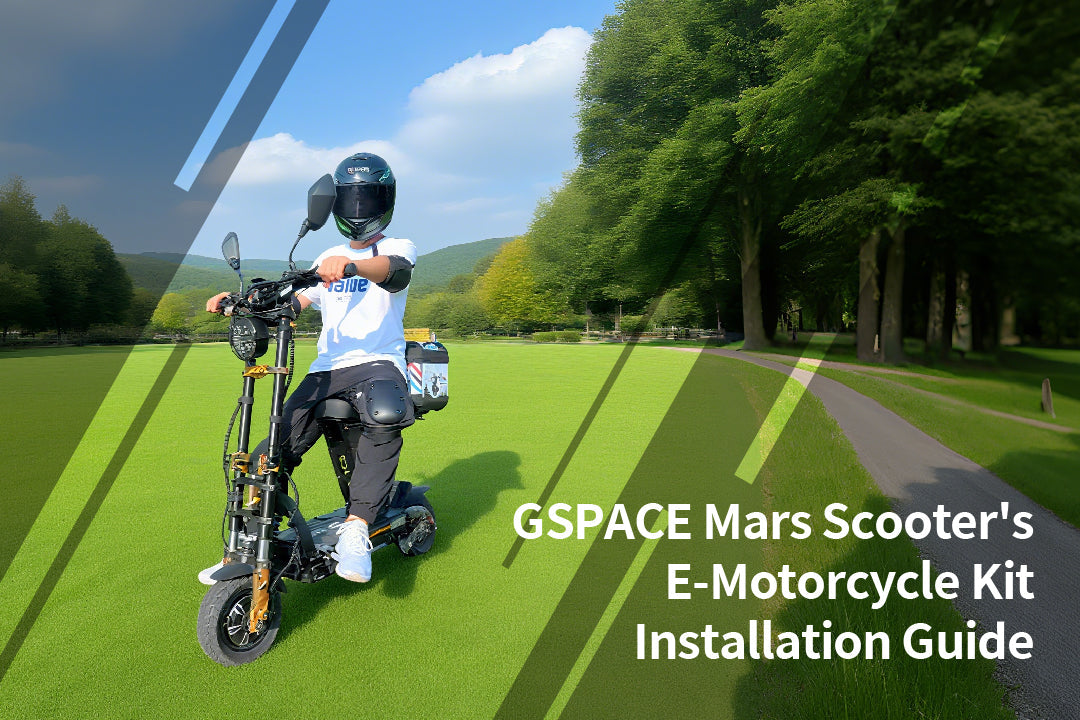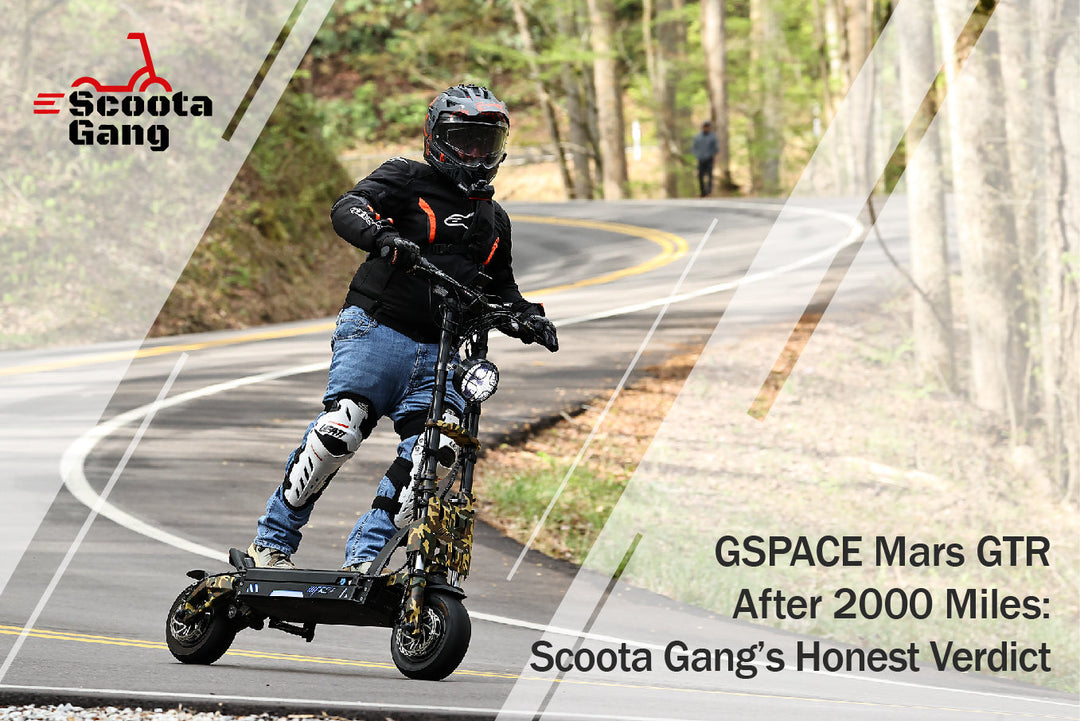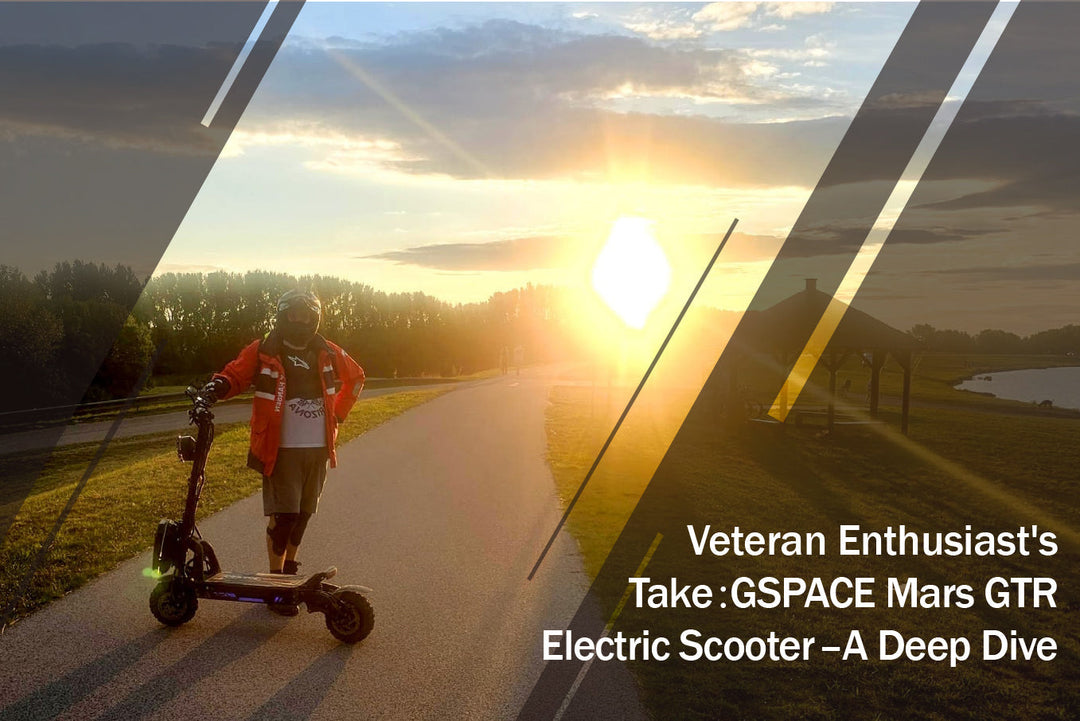GSPACE Mars for Beginners: How to Start, Balance & Stop Safely

Electric scooters have become a favorite means of transportation and exercise for many people due to their convenience and environmental friendliness. However, safely and skillfully riding them requires mastering certain techniques and methods. Unlike regular commuter electric vehicles, the GSPACE Mars has stronger power, acceleration, and a higher maximum speed, so there are some differences in riding experience and skills.
I. Key Preparations Before Riding
(1) Selection and Wearing of Protective Equipment
Due to the high speed limit of the GSPACE Mars series, riders may unconsciously increase their speed while enjoying the speed. Therefore, wearing safety gear is crucial.

- Helmet: The helmet is the core piece of riding safety equipment, which can greatly reduce the risk of head injuries. Be sure to choose a professionally certified product that fits your head snugly without shaking. Adjust the helmet strap to be comfortable yet tight, providing effective protection without obstructing your vision or movement. (If budget allows, a motorcycle helmet would be a more suitable choice)
- Other Protective Gear (Optional): If riding at high speeds or on traffic roads, it is recommended to wear professional riding clothes. You can also prepare elbow pads and knee pads as needed to provide additional protection for your joints. These protective gears can reduce the degree of body scratches and falls in case of accidents.
(2) Familiarizing with Electric Scooter Operations and Functions
- Understanding Control Components: Clearly understand the positions and functions of each control component of the electric scooter. Locate the accelerator and familiarize yourself with the acceleration operation method; identify the brake position and master the control of brake force; know how to use the lights (headlights, taillights, turn signals, etc.) and horn, so as to ensure your own safety and driving standards in different environments. For detailed tutorials, please refer to the GSPACE MARS manual.
- Testing Scooter Performance (Non-road Testing): Due to the strong power of the Mars series, after getting a new electric scooter, test it in a safe and enclosed area (such as an empty parking lot) first. Feel the sensitivity of the accelerator and understand the process from starting to accelerating; test the braking effect and master the brake force and braking distance.
(3) Scooter Condition Inspection
- Tires: Check the tire appearance for obvious wear, bulges, or cracks. Ensure the tread is clear and can provide sufficient grip. Use a tire pressure gauge to measure the tire pressure, and reasonably distribute the tire pressure according to the actual usage scenario, temperature, etc.
- Brake System: Check the stroke of the brake lever. Under normal circumstances, the brake lever should have a certain free stroke, and there should be no jamming when squeezed. You can gently squeeze the brake to feel the feedback force of the brake, and at the same time observe the contact between the brake pad and the brake disc (or brake drum) to see if there is any foreign matter. In addition, when testing the scooter performance, you can also intuitively feel the braking effect of the brake. If you find that the braking distance is too long or the scooter deviates when braking, it needs to be repaired in time.
- Appearance and Sound: Look around the scooter to see if any parts are loose, falling off, or abnormally deformed. Rotate the wheels and listen for abnormal friction sounds or other strange noises. If there are any, troubleshoot the problem in time.
- Battery Check: Estimate the required power according to the trip and ensure the scooter has sufficient power. Check the power display device to know the remaining power to avoid inconvenience and danger caused by running out of power during riding.
- Additional Preparation for Long-distance Riding: If planning a long-distance ride, carry tire repair tools (such as tire repair glue, air pump), and multi-functional tools to deal with possible minor scooter failures on the way.
II. Riding Start Steps
- Starting Method: Push the ground hard with the foot on the ground to make the scooter start sliding. When the speed reaches a certain level, gently turn the accelerator, and the motor starts to work to provide power for the vehicle. When starting, pay attention to keeping stable and avoid sudden acceleration which may cause loss of balance.
- Adjustment of Foot Position: After the scooter starts and accelerates smoothly, quickly and steadily step the other foot on the rear part of the pedal. The distance between the two feet should be the same as or slightly wider than the shoulder width. The knees are naturally slightly bent, and the body's center of gravity is slightly forward to maintain a stable riding posture.
III. Operating Skills During Driving
(1) Speed and Balance Control
- Low Speed: When ensuring riding safety, you can adjust your posture according to your own feeling to be comfortable.
- High Speed: Stand with left and right feet diagonally front and back. Get used to stepping on the rear foot pedal with your foot, bend your legs appropriately (lower the center of gravity to ensure high-speed stability), and lean your body forward to avoid leaning back due to high-speed inertia.
- Acceleration Operation: Control the speed by gradually rotating the accelerator to ensure smooth power output. During acceleration, maintain a stable center of gravity by applying downward pressure with your rear foot while simultaneously leaning your upper body slightly forward. This technique enhances traction and control. Adjust your speed based on road conditions, visibility, and your personal skill level. Increase speed gradually on flat, straight roads and reduce speed when encountering obstacles, turns, or uneven surfaces.
Balance Maintenance: When riding, the body's center of gravity is transferred to the pedals through the feet. Use the leg muscles to fine-tune the center of gravity to maintain the balance of the vehicle. Hold the handlebar lightly with both hands, which mainly plays an auxiliary role in balancing and controlling the direction. Avoid pushing or pulling the handlebar too hard to prevent affecting the stability of the vehicle. When encountering bumpy or uneven roads, buffer the vibration by bending the knees to stabilize the body's center of gravity. Core: Hold the handlebar tightly, stand firmly on the pedals, but do not be overly stiff. Flexibly use the muscle strength of the arms and legs to maintain the overall center of gravity balance of the scooter under conditions such as high speed, cornering, and bumpy roads.
(2) Turning Skills
- Low-speed Turning: When driving at low speed, turn by rotating the handlebar. The rotation range should be small and smooth, and at the same time, the body's center of gravity should be slightly tilted towards the turning direction to maintain the balance of the vehicle. For example, this turning method is used when driving at low speed in narrow areas such as communities and parking lots.
- High-speed Turning: When riding at high speed, turning is mainly achieved by shifting and tilting the body's center of gravity, and the handlebar only needs to be adjusted slightly. Tilt your body towards the turning direction, and the scooter will naturally turn following the center of gravity. Pay attention that the tilt angle should match the speed and turning radius. The faster the speed and the smaller the turning radius, the larger the tilt angle, but it must be controlled within a safe range to prevent rollover. For example, when you need to turn while driving at a relatively high speed on an empty road, use this method.
IV. Key Points of Brake Operation
Braking Method: First of all, you need to be familiar with your scooter and have a general idea of the braking force and braking distance.

The GSPACE Mars braking system includes both mechanical and electronic braking systems. At low speeds, normal braking is feasible. At high speeds, it is recommended to observe the road conditions in advance, release the accelerator and gradually squeeze the brake to decelerate when making a prediction. In case of emergency braking, do not fully squeeze the brake. Bend the knee of the foot stepping on the rear foot pedal to move the body's center of gravity backward and downward, so as to avoid forward tipping due to loss of balance caused by sudden braking. At the same time, keep the center of gravity backward to increase the friction of the rear wheel and improve the braking effect.
V. Safety Riding Precautions
- Abide by Traffic Rules: When riding an electric scooter, strictly abide by local traffic laws and regulations, drive in designated lanes (such as non-motor scooter lanes), do not run red lights, do not reverse, and do not overspeed. Pay attention to traffic lights and signs, pass according to instructions, and keep a safe distance from other vehicles and pedestrians.
- Avoid Dangerous Behaviors: Do not put your hands in your pockets while riding to prevent being unable to respond in time in case of emergencies. It is forbidden to use mobile phones while riding to avoid distraction. Avoid riding in bad weather (such as heavy rain, strong wind, heavy snow) or extremely poor road conditions (such as many potholes, muddy, deep water) to reduce the risk of accidents.
- Regular Scooter Maintenance: Regularly conduct a comprehensive inspection and maintenance of the electric scooter, including tire replacement, brake system debugging, battery maintenance, etc. If any abnormality is found in the vehicle, such as abnormal noise, loose parts, or brake failure, repair it in time to ensure that the scooter is always in good operating condition.
- Understand Your Own Ability Limits: When riding, reasonably plan the trip and speed according to your own technical level and physical condition. If you are a beginner, practice in a safe and open area first, and ride in complex road conditions after mastering the basic skills proficiently. Avoid attempting actions or challenges beyond your ability to ensure riding safety.
Conclusion: Observe excellent riders' riding more, practice riding more, and most importantly: ride safely!




